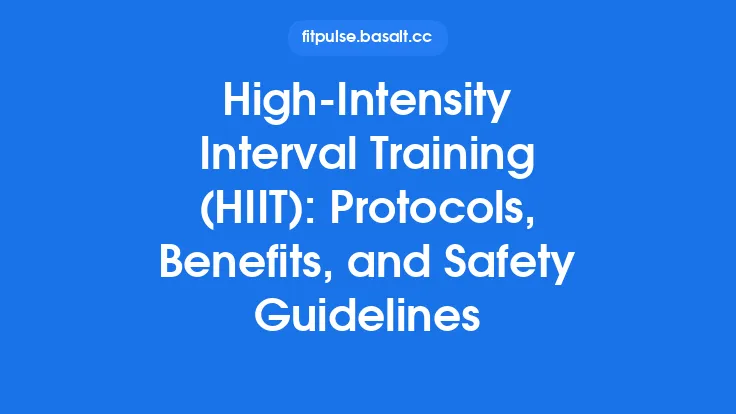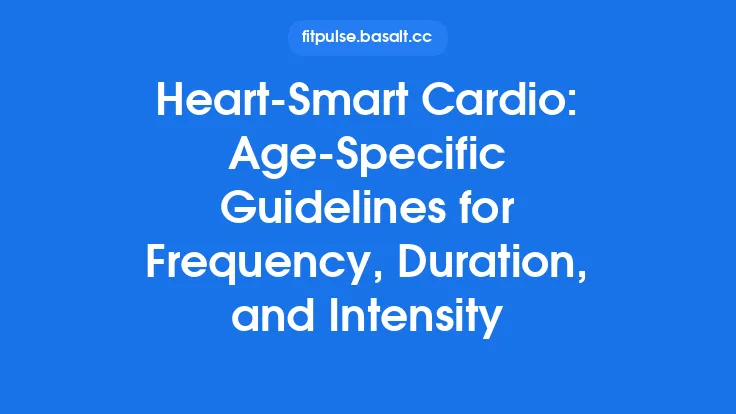Cryotherapy has moved from the fringe of elite sport to a mainstream recovery tool, thanks to a growing body of research that validates its impact on muscle repair, inflammation control, and overall athletic performance. While the buzz around ice baths and whole‑body chambers is loud, the science behind why cold exposure works—and how athletes can harness it most effectively—remains nuanced. This article dives deep into the physiological underpinnings, reviews the strongest evidence for performance gains, and offers practical, evidence‑based guidelines for integrating cryotherapy into a training regimen without repeating the safety‑focused advice found elsewhere.
Physiological Mechanisms Behind Cryotherapy
1. Vasoconstriction and Reduced Tissue Perfusion
When skin and superficial tissues are exposed to temperatures below 15 °C, sympathetic nervous system activation triggers rapid vasoconstriction. This limits blood flow to the treated area, decreasing the delivery of inflammatory mediators (e.g., prostaglandins, cytokines) and limiting edema formation. The reduced hydrostatic pressure in the interstitial space curtails fluid accumulation, which is especially valuable after high‑intensity or eccentric loading that typically provokes micro‑trauma.
2. Metabolic Rate Suppression
Cold exposure lowers the metabolic demand of muscle fibers by up to 30 % per 10 °C drop in temperature (Q10 effect). This metabolic slowdown conserves ATP, reduces the accumulation of lactate and hydrogen ions, and slows the cascade of secondary injury that can follow the initial mechanical insult.
3. Modulation of Inflammatory Signaling
Cryotherapy influences the balance between pro‑ and anti‑inflammatory cytokines. Studies using whole‑body cryotherapy (WBC) have reported acute reductions in circulating IL‑6 and TNF‑α, alongside increases in IL‑10, an anti‑inflammatory cytokine. The net effect is a more controlled inflammatory response that supports tissue remodeling rather than prolonged catabolism.
4. Neuromuscular Effects and Analgesia
Cold activates transient receptor potential (TRP) channels, particularly TRPM8, which convey a cooling sensation to the central nervous system. This activation competes with nociceptive signaling, providing an analgesic effect that can improve perceived recovery and allow athletes to train with less discomfort. Additionally, reduced muscle spindle firing rates can temporarily lower muscle tone, facilitating a more relaxed state post‑exercise.
5. Hormonal and Endocrine Responses
Whole‑body exposure to extreme cold (‑110 °C to ‑140 °C) triggers a systemic stress response, releasing catecholamines (epinephrine, norepinephrine) and endorphins. This “cold shock” can improve mood, increase alertness, and potentially enhance subsequent training sessions through a heightened arousal state.
Evidence‑Based Performance Benefits
| Outcome | Key Findings | Representative Studies |
|---|---|---|
| Delayed‑Onset Muscle Soreness (DOMS) | Reductions of 20‑30 % in soreness scores 24–48 h post‑exercise compared with passive recovery. | Hausswirth et al., J. Sports Sci. 2011; Costello et al., Scand. J. Med. Sci. Sports 2015 |
| Strength Recovery | Faster restoration of maximal voluntary contraction (MVC) after eccentric loading; 5‑10 % improvement in torque at 24 h. | Bleakley et al., Am. J. Sports Med. 2012 |
| Sprint and Power Performance | Acute whole‑body cryotherapy (3 min at ‑130 °C) improved 30‑m sprint times by ~0.03 s in elite sprinters. | Lubkowska et al., Int. J. Sports Med. 2018 |
| Inflammatory Biomarkers | Significant drops in CK, IL‑6, and CRP after repeated cold exposure over a 2‑week training block. | Ferreira‑Junior et al., Physiol. Rep. 2020 |
| Psychological Recovery | Higher scores on the Recovery-Stress Questionnaire (RSQ) and lower perceived fatigue after regular cryotherapy sessions. | Vaile et al., J. Strength Cond. Res. 2019 |
The consensus across meta‑analyses is that cryotherapy offers modest but consistent benefits for acute recovery markers, particularly when applied within the first hour after high‑intensity or eccentric work. The magnitude of performance enhancement is sport‑specific; power‑dominant athletes (sprinters, weightlifters) tend to see the most immediate gains, whereas endurance athletes benefit more from the cumulative anti‑inflammatory effects over a training cycle.
Different Modalities of Cryotherapy for Athletes
| Modality | Typical Temperature Range | Session Duration | Primary Use Cases |
|---|---|---|---|
| Cold Water Immersion (CWI) | 10–15 °C | 5–15 min | Post‑match recovery, DOMS reduction |
| Localized Ice Packs / Cryo‑Compressors | 0–5 °C (direct skin contact) | 10–20 min per region | Targeted joint or muscle inflammation |
| Partial‑Body Cryotherapy (PBC) | ‑110 °C to ‑140 °C (air) | 2–4 min | Rapid systemic response, hormonal boost |
| Whole‑Body Cryotherapy (WBC) | ‑110 °C to ‑140 °C (air) | 2–3 min (full body) | Global inflammation control, mood enhancement |
| Cryo‑Chambers with Circulating Cold Water | 2–8 °C (water) | 10–20 min | Combination of hydrostatic pressure and cold for deeper tissue cooling |
| Cryo‑Massage Devices | 5–15 °C (gel pads) | 5–10 min per muscle group | Localized analgesia and muscle relaxation |
Each modality delivers a distinct thermal dose, defined by temperature, exposure time, and the mass of tissue cooled. The “thermal dose” concept is crucial for tailoring protocols: a higher temperature (e.g., 15 °C) for a longer duration can achieve similar tissue cooling as a lower temperature (e.g., 5 °C) for a shorter period, but the physiological responses (e.g., catecholamine surge) may differ.
Optimizing Cryotherapy Protocols for Specific Sports
1. Sprint & Power Sports (Track, Weightlifting, Rugby)
- Goal: Rapid restoration of neuromuscular power and reduction of acute inflammation.
- Protocol: 3‑minute whole‑body cryotherapy within 30 minutes post‑session, followed by a brief 5‑minute localized ice pack on the most stressed muscle groups (e.g., quadriceps, hamstrings). Frequency: 3–4 times per week during high‑intensity blocks.
2. Endurance Sports (Marathon, Cycling, Triathlon)
- Goal: Attenuate cumulative inflammation and support glycogen resynthesis.
- Protocol: 10‑minute cold water immersion at 12 °C immediately after long rides/runs, combined with a 2‑minute partial‑body cryotherapy session on recovery days. Frequency: 2–3 times per week, with emphasis on post‑long‑duration sessions.
3. Team Sports (Soccer, Basketball, Field Hockey)
- Goal: Manage repeated micro‑trauma from frequent matches and training.
- Protocol: 5‑minute localized cryo‑compressor treatment on high‑risk joints (knees, ankles) after each match, supplemented by a weekly 3‑minute whole‑body cryotherapy session to maintain systemic anti‑inflammatory tone.
4. Combat & High‑Impact Sports (MMA, Boxing, Wrestling)
- Goal: Reduce swelling and accelerate soft‑tissue healing.
- Protocol: 15‑minute cold water immersion at 10 °C for the entire body, followed by targeted ice massage on bruised areas. Use a 2‑minute partial‑body cryotherapy session on rest days to sustain hormonal benefits.
Practical Implementation in Training Environments
- Infrastructure Planning
- Space Requirements: Whole‑body cryotherapy chambers need a dedicated, insulated room with proper ventilation and a dry‑ice or liquid‑nitrogen supply. Cold water immersion tanks can be portable or built‑in, requiring drainage and temperature control systems.
- Power & Safety Systems: While this article does not focus on safety protocols, ensure that all equipment complies with local electrical and fire codes, and that emergency shut‑off mechanisms are in place.
- Scheduling Around Training Loads
- Acute Sessions: Align cryotherapy within the first hour post‑exercise to capitalize on the “window of opportunity” for inflammation modulation.
- Chronic Integration: Plan a weekly “recovery block” where athletes receive a longer, lower‑intensity cold exposure (e.g., 10‑minute CWI) to promote long‑term adaptation without interfering with training stimulus.
- Individualization
- Thermal Tolerance Testing: Conduct a baseline assessment of each athlete’s cold perception and skin temperature response using infrared thermography. Adjust temperature and duration accordingly.
- Monitoring Load: Pair cryotherapy with objective load metrics (e.g., GPS‑derived distance, session RPE) to determine when a higher thermal dose is warranted.
- Complementary Nutrition
- Post‑Cold Protein Intake: Consuming 20–30 g of high‑quality protein within 30 minutes after cryotherapy can synergize the reduced metabolic rate with muscle protein synthesis, optimizing recovery.
- Hydration: Cold exposure can cause diuresis; ensure athletes replace fluids lost during immersion or chamber sessions.
Monitoring and Assessing Effectiveness
| Metric | Tool | Frequency | Interpretation |
|---|---|---|---|
| Muscle Temperature | Infrared thermography or skin probes | Pre‑ and post‑session | Verify adequate cooling (≥5 °C drop for targeted tissue) |
| Inflammatory Biomarkers | Blood tests (CK, IL‑6, CRP) | Weekly or bi‑weekly | Declining trends indicate effective inflammation control |
| Performance Tests | Countermovement jump, sprint time, isokinetic torque | Pre‑ and post‑training block | Improvements >5 % suggest functional benefit |
| Perceived Recovery | Recovery‑Stress Questionnaire (RSQ) or Likert scales | After each session | Higher scores correlate with subjective benefit |
| Sleep Quality | Wearable actigraphy or sleep diaries | Nightly | Enhanced sleep may reflect systemic hormonal effects of cold exposure |
Collecting these data points allows coaches and sports scientists to fine‑tune cryotherapy protocols, ensuring that the thermal dose aligns with the athlete’s physiological response and training objectives.
Future Directions and Emerging Research
- Molecular Profiling: Next‑generation sequencing is being applied to track gene expression changes after cryotherapy, revealing up‑regulation of heat‑shock proteins (HSP70) and mitochondrial biogenesis markers (PGC‑1α). These insights could lead to personalized “cold‑prescription” based on an athlete’s genetic makeup.
- Hybrid Modalities: Combining cryotherapy with low‑level laser therapy (LLLT) or pneumatic compression is under investigation to amplify micro‑circulatory benefits while preserving anti‑inflammatory effects.
- Portable Whole‑Body Systems: Advances in compact, nitrogen‑free cryo‑chambers are making whole‑body exposure more accessible to smaller training facilities, potentially democratizing the technology beyond elite centers.
- Neurocognitive Outcomes: Preliminary work suggests that repeated whole‑body cryotherapy may improve executive function and reaction time, likely mediated by catecholamine surges and reduced central fatigue.
Continued interdisciplinary research—spanning physiology, biomechanics, and data science—will refine the optimal dosing strategies and expand the evidence base for cryotherapy as a cornerstone of modern athletic recovery.
Bottom line: Cryotherapy offers a scientifically grounded, versatile toolbox for athletes seeking faster recovery, reduced inflammation, and subtle performance gains. By understanding the underlying mechanisms, selecting the appropriate modality, and tailoring protocols to sport‑specific demands, coaches and athletes can integrate cold exposure into training cycles with confidence and measurable results.





